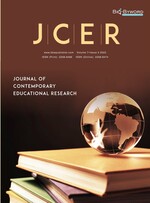Effectiveness of Oral English Blended Teaching Supported by Digital Technology in Universities
Abstract
An empirical study of oral English blended teaching was conducted in a university. The experiment class, which was under the blended teaching mode supported by digital technology, made significant improvements in language accuracy and range, discourse length and coherence, as well as flexibility and appropriateness. On the other hand, there was no significant improvement in the scores of the control class. Through the analysis of results by means of independent t-test and paired sample t-test, we drew the following conclusions: the oral performance of university students from the experiment class significantly improved; there was remarkable difference in the total oral English scores between the experiment class and the control class; the improvement in the total score and the score of each module showed that blended teaching had significant effect on the improvement of university students’ oral English performance.
References
Wang Q, Castro D, 2010, Classroom Interaction and Language Output. English Language Teaching, 3(2): 175–186.
Meredith R, Catherine S, 2020, Analyzing Input Quality Along Three Dimensions: Interactive, Linguistic, and Conceptual. Journal of Child Language, 47(1): 5–21.
Allaw E, McDonough K, 2019, The Effect of Task Sequencing on Second Language Written Lexical Complexity, Accuracy, and Fluency. System, 85: 102–104.
Von S, Motha S, Kubota R, 2020, Race and Language Teaching. Language Teaching, 53(4): 391–421.
Rajesh V, Venkatesh L, 2019, Preliminary Evaluation of a Low-Intensity Parent Training Program on Speech-Language Stimulation for Children with Language Delay. International Journal of Pediatric Otorhinolaryngology, 122: 99–104.
?ahin M, Aybek E, 2019, Jamovi: An Easy to Use Statistical Software for the Social Scientists. International Journal of Assessment Tools in Education, 6(4): 670–692.
Mee W, Chua C, 1991, Regression Toward the Mean and the Paired Sample T Test. The American Statistician, 45(1): 39–42.
Gerald B, 2018, A Brief Review of Independent, Dependent and One Sample T-Test. International Journal of Applied Mathematics and Theoretical Physics, 4(2): 50–54.
Rietveld T, van Hout R, 2015, The T Test and Beyond: Recommendations for Testing the Central Tendencies of Two Independent Samples in Research on Speech, Language and Hearing Pathology. Journal of Communication Disorders, 58: 158–168.
Krzywinski M, Altman, N, 2014, Comparing Samples – Part I: Robustly Comparing Pairs of Independent or Related Samples Requires Different Approaches to the T-Test. Nature Methods, 11(3): 215–217.

